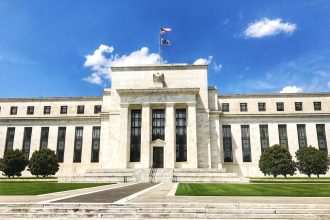Morsa Images/ Getty Images; Illustration by Austin Courregé/Bankrate
A certificate of deposit (CD) is a time deposit account. A bank agrees to pay interest at a certain rate if savers deposit their cash for a set term, or period of time.
Find current CD rates and recent interest rate trends from Bankrate below. Here are the current national average annual percentage yields (APYs) for this week, according to Bankrate’s most recent survey:
- 1-year CD yield: 1.76 percent APY
- 3-year CD yield: 1.41 percent APY
- 5-year CD yield: 1.43 percent APY
The national average rate for one-year and five-year CDs started to increase in February 2022, driven in part by rising Treasury yields and expectations of Federal Reserve rate increases in 2022. Since February 2023, the one-year CD average has been higher than the five-year CD average.
The Fed raised rates seven times in 2022, in March, May, June, July, September, November and December. It also raised rates in February 2023, March 2023, May 2023 and July 2023.
These were the first rate increases since 2018, as the Fed sought to tame high inflation.
Latest average CD APYs: 3-month trend
Bankrate monitors the national average rates on various CD terms, including:
| Date | 1-year CD | 3-year CD | 5-year CD |
|---|---|---|---|
| 04/15/2024 | 1.74% | 1.41% | 1.42% |
| 04/08/2024 | 1.74% | 1.41% | 1.42% |
| 04/01/2024 | 1.73% | 1.41% | 1.41% |
| 03/25/2024 | 1.74% | 1.40% | 1.41% |
| 03/18/2024 | 1.73% | 1.42% | 1.43% |
| 03/11/2024 | 1.74% | 1.41% | 1.43% |
| 03/04/2024 | 1.72% | 1.41% | 1.43% |
| 02/26/2024 | 1.73% | 1.40% | 1.42% |
| 02/19/2024 | 1.73% | 1.40% | 1.41% |
| 02/12/2024 | 1.74% | 1.42% | 1.42% |
| 02/05/2024 | 1.74% | 1.41% | 1.43% |
| 01/29/2024 | 1.75% | 1.42% | 1.43% |
| 01/22/2024 | 1.75% | 1.41% | 1.43% |
| 01/15/2024 | 1.79% | 1.43% | 1.44% |
How Bankrate calculates the national average
In June 2023, Bankrate updated its methodology that determines the national average CD rates. More than 500 banks and credit unions are surveyed weekly to generate the national averages. Among these institutions are those that are broadly available and offer high yields, as well as some of the nation’s largest banks.
Compare CD rates by term for April 2024
Current 6-month CD rates
- Popular Direct — 5.30% APY
- TAB Bank — 5.27% APY
- America First Credit Union — 5.25% APY
- Vio Bank — 5.25% APY
- First Internet Bank of Indiana — 5.18% APY
See additional best 6-month CD rates.
Current 1-year CD rates
- CIBC Bank USA — 5.36% APY
- First Internet Bank of Indiana — 5.31% APY
- TAB Bank — 5.27% APY
- America First Credit Union — 5.25% APY
- Bread Savings — 5.25% APY
See additional best 1-year CD rates.
Current 3-year CD rates
- First Internet Bank of Indiana — 4.66% APY
- Popular Direct — 4.55% APY
- Quontic Bank — 4.40% APY
- America First Credit Union — 4.35% APY
- LendingClub Bank — 4.30% APY
See additional best 3-year CD rates.
Current 5-year CD rates
- First Internet Bank of Indiana — 4.55% APY
- SchoolsFirst Federal Credit Union — 4.35% APY
- Quontic Bank — 4.30% APY
- Popular Direct — 4.30% APY
- America First Credit Union — 4.20% APY
See additional best 5-year CD rates.
Note: Annual percentage yields (APYs) shown were updated between April 18-25. Bankrate’s editorial team validates this information regularly, typically weekly. APYs may have changed since they were last updated and may vary by region for some products. Bankrate includes only FDIC banks or NCUA credit unions in its listings. A listing may require new money.
Current CD rates FAQs
-
The Federal Reserve’s decisions on interest rates can affect CD rates.Once the central bank makes a decision to change the rate, competitive banks will generally move CD yields in the same direction. Broader macroeconomic conditions also influence CD rates.For instance since March 2022, the one-year CD national average has mostly increased or stayed the same.
-
CD rates are determined by several factors. The decisions made by the Federal Reserve on the federal funds rate will likely influence CD rates. Competition among banks and credit unions will also influence the payout on their CDs, as well as whether or not the financial institution needs deposits. In general, online banks tend to pay higher rates than banks with branches. Changes in Treasury yields and economic conditions also influence CD rates.
Learn more to maximize your earnings
Read the full article here
















